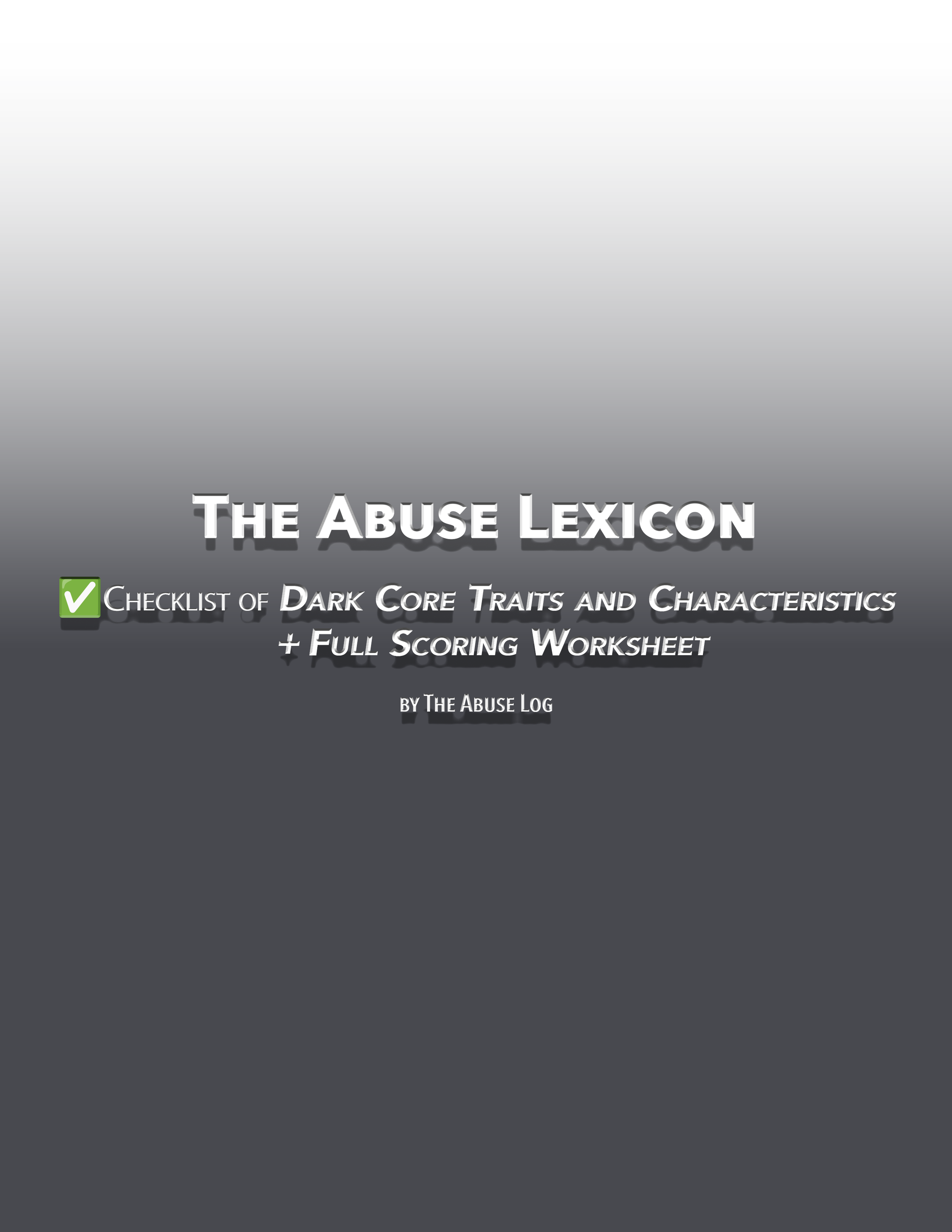Compensatory Structure and Narcissism
Introduction
Narcissism, often painted in broad strokes as a personality flaw or moral failing, is more accurately understood as a complex psychological defense system. At its core, narcissism is a response to deep-seated feelings of inadequacy, shame, and vulnerability. The concept of compensatory structures offers a valuable lens for understanding how narcissistic individuals construct and maintain intricate psychological defenses to shield themselves from these feelings.
These compensatory structures are not merely surface-level behaviors; they are deeply rooted mechanisms designed to preserve an individual's self-image, protect them from emotional pain, and maintain a façade of superiority and control. But like any hastily built fortress, these structures are inherently fragile. When challenged or exposed, they can crumble, leading to what psychologists term narcissistic collapse.
In this blog, we’ll explore the origins of compensatory structures in narcissism, how they manifest in behavior across different domains of life, and the devastating impact of their collapse. We’ll also examine therapeutic approaches to addressing these defenses and fostering healthier patterns of self-worth and emotional regulation.
1. The Origins of Compensatory Structures in Narcissism
Compensatory structures in narcissism originate in early childhood experiences marked by emotional neglect, excessive criticism, unrealistic expectations, or inconsistent validation. These formative experiences shape the individual’s self-concept and emotional coping mechanisms.
Early Psychological Roots:
Conditional Love: When a child learns that love and approval are contingent on performance, appearance, or achievements, they begin to equate self-worth with external validation.
Parental Idealization and Criticism: A mix of overly indulgent praise and sharp criticism creates confusion and insecurity in the developing self-concept.
Emotional Neglect: Lack of consistent emotional support can drive a child to construct an alternate self-image as a survival mechanism.
To cope with these early wounds, individuals often develop compensatory strategies. These strategies revolve around creating an idealized version of themselves—one that is beyond reproach, immune to criticism, and always in control.
Key Defense Mechanisms in Compensatory Structures:
Projection: Attributing one's flaws or insecurities to others.
Idealization and Devaluation: Elevating others to gain validation, then devaluing them when they threaten the narcissist’s self-image.
Fantasy and Delusion: Constructing imaginary scenarios of power, success, or beauty to escape inner feelings of worthlessness.
Control and Domination: Maintaining rigid control over others and situations to minimize emotional vulnerability.
These defenses, while effective in the short term, set the stage for a lifetime of fragile relationships, recurring emotional crises, and a deep-seated fear of exposure.
2. How Compensatory Structures Manifest in Behavior
Compensatory structures are not confined to the internal psychological world—they bleed into every facet of a narcissist's life, from their professional environment to their personal relationships.
A. In Professional Settings:
Narcissists often gravitate toward roles or careers that offer status, control, or admiration. However, their compensatory behaviors can undermine their professional success:
Overworking: Excessive commitment to projects to prove worth.
Micromanagement: Reluctance to delegate tasks out of fear of perceived incompetence.
Credit Hoarding: Taking credit for successes while avoiding blame for failures.
Vindictiveness: Reacting with disproportionate rage to constructive criticism.
Example: A narcissistic CEO might obsessively monitor employees, dismiss constructive feedback, and claim sole credit for team successes while scapegoating subordinates for failures.
B. In Intimate Relationships:
Romantic relationships are fertile ground for compensatory structures to play out. The cycle often begins with idealization and ends in devaluation.
Love Bombing: Excessive affection and grand gestures early in the relationship to secure admiration.
Gaslighting: Manipulating a partner's perception of reality to maintain control.
Blame Shifting: Avoiding responsibility for relationship problems.
Withdrawal: Emotional coldness when the partner fails to meet unrealistic expectations.
Example: A narcissistic partner might initially overwhelm their significant other with affection but later emotionally withdraw when confronted about their controlling behavior.
C. In Social and Digital Spaces:
Social media offers a perfect playground for compensatory structures. Narcissists curate carefully constructed digital personas that project perfection and superiority:
Constant posting of achievements and successes.
Avoidance of vulnerability or transparency.
Aggressive responses to criticism or negative feedback.
Example: A narcissistic influencer might carefully curate their feed to present an illusion of perpetual success while avoiding authentic engagement with followers.
3. The Fragility of Compensatory Structures: Narcissistic Collapse
Despite their elaborate construction, compensatory structures are inherently fragile. They rely on constant reinforcement through admiration, success, or external validation. When these pillars of reinforcement are shaken—by failure, rejection, or exposure—the narcissist may experience what psychologists call narcissistic collapse.
What Triggers a Collapse?
Public humiliation or criticism.
Professional failure or loss of status.
Rejection in intimate relationships.
Financial setbacks or loss of social capital.
Symptoms of Narcissistic Collapse:
Intense shame and self-loathing.
Withdrawal from social or professional interactions.
Outbursts of uncontrollable rage.
Substance abuse or self-destructive behavior.
Example: A high-achieving executive fired from their job might spiral into depression, blame colleagues, and withdraw from all social contact.
The Aftermath of Collapse:
Without intervention, narcissists may either:
Rebuild even more rigid compensatory structures, repeating the cycle.
Sink into prolonged emotional dysfunction, experiencing chronic depression or anxiety.
With therapeutic intervention, however, narcissists can begin to confront their underlying insecurities and develop healthier coping strategies.
4. Therapeutic Approaches to Address Compensatory Structures
Breaking down compensatory structures is an arduous process, requiring patience, skill, and a therapeutic environment built on trust.
A. Psychoanalytic Therapy:
Focuses on uncovering unconscious patterns and exploring early childhood experiences that gave rise to narcissistic defenses.
B. Cognitive-Behavioral Therapy (CBT):
Helps individuals identify and challenge distorted thought patterns while developing healthier emotional responses.
C. Schema Therapy:
Addresses deep-rooted belief systems and maladaptive schemas that perpetuate narcissistic defenses.
D. Mindfulness Practices:
Teaches emotional regulation and helps individuals recognize when they are operating from compensatory defenses.
Therapeutic Goals:
Build emotional resilience against shame and criticism.
Develop authentic self-esteem independent of external validation.
Foster genuine empathy and connection with others.
Cultivate healthier conflict resolution strategies.
Final Reflections: Breaking the Cycle of Fragility
Compensatory structures in narcissism are more than surface-level arrogance or self-importance; they are deeply entrenched survival mechanisms developed in response to early emotional wounds. While these structures provide temporary relief from shame and insecurity, they ultimately prevent genuine connection, self-acceptance, and emotional growth.
Understanding and addressing these defenses require a compassionate, patient approach—whether in therapy, personal relationships, or self-reflection. Healing begins when individuals confront their vulnerabilities with courage, allowing their compensatory structures to be dismantled and replaced with a more authentic, resilient sense of self.
Only then can the fragile architecture of narcissism be replaced with something sturdy, sustainable, and genuinely fulfilling.








![The Abuse Log Notion Template [Basic]](https://images.squarespace-cdn.com/content/v1/65b9553c448d7e5b0ec1dfcd/4c83e581-b720-4cbe-83b1-2d72e7a9ac8a/Logo+Gumroad-Basic.png)
![The Abuse Log Notion Template [Advanced]](https://images.squarespace-cdn.com/content/v1/65b9553c448d7e5b0ec1dfcd/c3bb150a-a911-4f91-a23e-3621b98a2d55/Logo+GumroadAdvanced.png)
![The Abuse Log Notion Template [Professional]](https://images.squarespace-cdn.com/content/v1/65b9553c448d7e5b0ec1dfcd/7fa18cea-edf4-4325-8234-13f3527579c2/Logo+GumroadProfessional.png)
















































